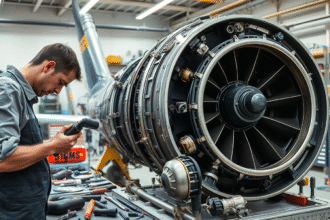Traveling through airport procedures can be overwhelming, even for seasoned travelers. It’s key to grasp the security protocols and rules to make your trip smoother.
airport procedures security boarding gate baggage claim
Knowing the boarding gate rules and baggage claim procedures is vital. This knowledge ensures a hassle-free trip. By understanding these steps, you can navigate the airport with confidence.
Key Takeaways
- Understand security protocols to avoid delays
- Familiarize yourself with boarding gate rules
- Know the baggage claim procedures
- Arrive early to account for unexpected issues
- Stay informed about airport procedures
Planning Your Airport Experience
Planning your airport visit can make a big difference. Knowing the airport layout and procedures can improve your travel. It makes your journey smoother and less stressful.
Understanding Airport Codes and Terminal Layouts
Learning about airport codes and terminal layouts helps you move around easily. Airport codes are three letters that identify airports, like JFK for New York’s John F. Kennedy International Airport. Knowing where to find check-in, security, and gates saves time and reduces stress.
airport terminal layout
Checking Flight Status and Online Check-In Options
Staying updated on your flight status is important. Most airlines let you check in online. You can pick your seat, print or download your boarding pass, and check baggage rules. This makes your airport visit smoother.
| Airline | Online Check-In | Mobile Boarding Pass |
| American Airlines | Yes | Yes |
| Delta Airlines | Yes | Yes |
Creating a Pre-Flight Checklist
Having a pre-flight checklist helps you remember important tasks. Check the weather at your destination, make sure you have all travel documents, and tell your bank about your travel plans. This way, you avoid any last-minute issues.
“The key to a stress-free airport experience is preparation.”
By taking these steps, you can make your airport visit easier and less stressful.
Airport Arrival and Check-In Procedures
Knowing how to arrive and check in at the airport is key for a smooth trip. It’s important to arrive early, and how early depends on your flight type.
Optimal Airport Arrival Times by Flight Type
For domestic flights, get to the airport 2 hours before your flight. For international flights, aim to arrive 3 hours early.
| Flight Type | Recommended Arrival Time |
| Domestic | 2 hours before departure |
| International | 3 hours before departure |
Self-Service Kiosks vs. Counter Check-In
Choosing between self-service kiosks and counter check-in depends on what you prefer and the airline’s rules. Self-service kiosks are fast, while counter check-in lets you talk to staff.
Digital Boarding Passes and Airline Apps
Digital boarding passes and airline apps make checking in easier. Make sure your phone can hold your travel documents.
Smartphone Storage Tips for Travel Documents
To keep your travel documents handy, follow these tips: organize them in a folder, keep your phone charged, and turn on flight alerts.
airport check-in procedures
Baggage Handling Before Security
Knowing how to handle your baggage before security is key for a smooth trip. It’s important to understand the steps to take with your luggage. This knowledge can greatly improve your airport experience.
Checked Baggage Requirements and Weight Limits
Each airline has its own rules for checked bags, including weight and size limits. Most allow bags up to 50 pounds (23 kg). But, it’s best to check with your airline to avoid any problems at check-in.
Baggage Fees and Airline-Specific Policies
Baggage fees are something to think about too. Many airlines charge for checked bags, with prices from $25 to $150 or more. Some airlines offer better deals, so it’s good to know their policies.
Special Items and Oversized Luggage Processing
Handling special or oversized items can be tricky. This includes musical instruments, sports gear, or mobility aids. Airlines have special rules for these items, which might need extra notice or special care.
Luggage Tracking Technologies
Many airlines use tracking systems to help with lost luggage worries. These systems let you follow your bag’s journey. Some airlines also have mobile apps for tracking your luggage’s status.
Here are some key things to remember for baggage handling before security:
- Check with your airline for their baggage policy, including weight limits and fees.
- Understand the procedures for special or oversized items.
- Utilize luggage tracking technologies to monitor your baggage.
TSA Security Screening Process
Understanding the TSA screening process is key when going through airport security. The Transportation Security Administration (TSA) has set up steps to make travel safe and smooth.
Document Verification Requirements
You’ll need to show your boarding pass and ID before you can go through security. Make sure your documents are ready to go to avoid any hold-ups. Your boarding pass can be on your phone or printed, but it must be clear and have all the needed details.
Standard Security Lane Procedures
After showing your documents, you’ll move to the screening area. Here, you’ll take off your electronics, liquids, and belts and put them in bins for scanning. You’ll also go through a metal detector or scanner. Wear easy-to-remove shoes and avoid anything with metal to speed things up.
TSA PreCheck and Clear Program Benefits
Think about joining TSA PreCheck or the Clear program for faster screening. TSA PreCheck lets you keep your shoes, belts, and light jackets on and keeps your electronics in your bag. The Clear program uses biometric tech to make identity checks quicker.
Known Traveler Numbers and Global Entry
Being in TSA PreCheck gives you a Known Traveler Number (KTN). Use this number when booking to get into the fast lanes. Global Entry members get TSA PreCheck benefits and also get to skip lines at customs when coming back from abroad.
By knowing the TSA screening steps and using TSA PreCheck and Clear, you can make your airport trip easier and less stressful.
Navigating Airport Security Efficientently
To navigate airport security well, you need to prepare and know the procedures. Knowing how to pack your carry-on for X-ray screening is key. Also, choose the right clothes and follow rules for electronics and liquids. These steps can make going through security easier.
Preparing Your Carry-On for X-Ray Screening
Make your carry-on easy for X-ray screening. Put laptops and liquids in separate bins. Don’t overpack. This makes screening faster and reduces extra checks.
Clothing and Accessory Recommendations
Wear shoes that are easy to take off and avoid too much jewelry. Choose clothes that are simple to pass through security without extra checks.
Electronics and Liquids3-1-1 Rule
The 3-1-1 rule for liquids means containers must be 3.4 ounces or less. They should fit in a 1-quart bag, with one bag per person. Electronics bigger than a phone must go in a bin for X-ray.
Medical Exceptions and Special Situations
If you have medical devices or special needs, tell security ahead of time. Some items might need extra screening or papers. Being ready can make security smoother.
Airport Procedures for Security, Boarding Gate, and Baggage Claim
Understanding airport procedures can make your travel smoother. Knowing how to handle security, boarding, and baggage claim can save you time. It helps you move through the airport more efficiently.
Security Checkpoint Etiquette and Flow
Keeping the security line moving is key. Remove your shoes, belts, and electronics before you get there. Have your boarding pass and ID ready. Listening to security and keeping an eye on your stuff can cut down wait times.
Common Security Delays and Prevention Strategies
Delays often happen when people forget their laptops or have the wrong size liquids. Check your carry-ons before the security line. Wear shoes that are easy to take off.
Secondary Screening Procedures and Passenger Rights
If you’re picked for extra screening, stay calm and follow directions. You have the right to ask about the screening. This is important for your safety and understanding.
Prohibited Items and Confiscation Policies
Know what you can’t bring, like certain liquids and sharp objects. This avoids problems at security. If something is taken, it’s for safety. Always follow what security tells you to do.
Post-Security Airport Navigation
After clearing security, you’re halfway to your destination. But navigating the airport’s remaining sections can be tough. Knowing how to use the post-security areas can make your travel better.
Using Airport Maps and Digital Wayfinding
Modern airports have advanced digital wayfinding systems. You can use airport maps on your phone or at kiosks to find your gate. They also help you find dining, shops, and lounges. Many airports have apps for real-time flight updates and gate changes.
Transportation Between Terminals and Gates
If you’re traveling to different terminals or a long way to your gate, learn about airport transport. Airports have shuttle buses, trains, or walking paths between terminals. Knowing these options can save you time and reduce stress.
Finding Services, Lounges, and Amenities
Airports are more than waiting places; they offer services, lounges, and amenities. You can find everything from high-end shopping to spa services. Lounges are great for comfort, with free food, drinks, Wi-Fi, and sometimes showers.
Accessibility Services and Assistance
Airports have accessibility services for travelers with disabilities or special needs. This includes wheelchair help, priority boarding, and accessible restrooms. It’s a good idea to contact your airline or the airport ahead of time for any needed assistance.
Boarding Gate Procedures and Etiquette
The boarding gate is the last stop before you get on your flight. Being ready is essential. Knowing boarding gate procedures and etiquette can make your trip better.
Understanding Boarding Groups and Priority Access
Airlines sort passengers into boarding groups. These groups depend on your ticket type, frequent flyer status, or special needs. Knowing your boarding group and if you have priority access helps plan and lowers stress.
Gate Check Procedures for Carry-Ons
If your carry-on is too big or there’s little space, it might be gate-checked. Be ready to check your bag at the gate to not slow down the boarding process.
Boarding Assistance for Families and Special Needs
Families with young kids or those with special needs might get boarding assistance. This means you can board early to settle before others. Telling the airline about your needs ahead of time makes things smoother.
Last-Minute Gate Changes and Delays
Be ready for last-minute gate changes or delays. Keep an eye on airport displays and listen for announcements. Staying updated helps you quickly adapt to any changes, keeping your travel plans on track.
In–Flight Preparation and Regulations
As you get ready for your flight, knowing the in-flight rules can make your trip better. Learning about carry-on storage, electronic device use, and safety steps helps everyone. It makes your flight smoother and safer for all.
Carry-On Storage Protocols and Etiquette
Storing your carry-on luggage correctly is key for a safe and comfortable flight. Keep your bags in the overhead bins or under the seat in front. This keeps the aisle clear and emergency exits open. Remember:
- Stow your bag in the right spots
- Make sure your bag fits where it’s supposed to
- Think about other passengers’ space
Electronic Device Policies During Different Flight Phases
Electronic devices are a big part of traveling today. But, there are rules about when you can use them. You must put them in airplane mode during takeoff and landing. During the flight, you can use them in airplane mode or connect to Wi-Fi if it’s available. Keep in mind:
- Use airplane mode during takeoff and landing
- Check if the airline offers Wi-Fi
- Know any special rules for device use
Safety Briefing Information and Exit Row Responsibilities
Before the flight starts, you’ll get a safety briefing. It covers emergency steps, exit locations, and safety gear. If you’re in an exit row, you have extra duties. You need to know the exit steps and be able to do them in an emergency. It’s important to:
- Pay close attention to the safety briefing
- Read the safety card given to you
- Know your duties if you’re in an exit row
Being informed and ready makes your flight safer and more enjoyable for everyone.
Arrival and Deplaning Procedures
Knowing what to expect when you arrive can make your trip less stressful. It’s important to understand the steps for both international and domestic flights. Also, knowing how to handle connecting flights is key for a smooth journey.
International vs. Domestic Arrival Differences
International arrivals need extra steps like customs and immigration. Domestic arrivals are simpler. Knowing these differences helps you prepare better.
- International arrivalsals often require passport control and may involve more paperwork.
- Domestic arrivals usually bypass these steps, allowing for a quicker exit.
Connecting Flight Procedures and Minimum Connection Times
If you have a connecting flight, knowing the minimum connection times is essential. Airlines give these times to help you plan.
- Check the minimum connection time for your specific airport and flights.
- Plan your route within the airport in advance to save time.
Customs and Immigration Processing
For international travelers, customs and immigration are key steps. Make sure you know the required documents and procedures.
Mobile Passport Control and Global Entry Kiosks
Using mobile passport control and Global Entry kiosks can speed up your customs process. These services are for pre-approved travelers to make things faster.
By using these technologies, you can cut down your wait times. This makes your travel experience smoother.
Navigating Baggage Claim Areas
Getting to your baggage can seem hard, but it’s easy with the right tips. After a long flight, you don’t want to get lost in the baggage claim. It’s important to know what to do.
Locating Your Assigned Baggage Carousel
First, find the right baggage carousel for your flight. Look for electronic boards or screens in the area. Check the flight number and destination to make sure you’re in the right place.
Identifying and Retrieving Your Luggage Efficiently
After finding the right carousel, watch for your luggage. Make sure your bags are properly tagged with the tags from check-in. When you get your bags, be careful not to damage them or mix them up with others.
Delayed, Damaged, or Lost Baggage Procedures
If your bag is delayed, damaged, or lost, tell the airline right away. They will help you with the claim process. Knowing the airline’s policy is key.
Baggage Insurance and Liability Limitations
Think about getting baggage insurance to protect against loss or damage. Airlines have limits on what they cover. It’s good to know their policies before you travel. Here’s a quick look:
| Airline | Liability Limit per Bag | Baggage Insurance Option |
| American Airlines | $3,500 | Yes |
| Delta Air Lines | $3,300 | Yes |
| United Airlines | $3,500 | Yes |
Being informed and ready helps you navigate the baggage claim smoothly. This way, you can avoid problems with your luggage.
Conclusion: Mastering Airport Procedures for Stress-Free Travel
Learning how to handle airport procedures is essential for stress-free travel. This guide has shown you how to move through security, boarding gates, and baggage claim with ease. Knowing these steps makes your trip better, letting you enjoy your journey without worrying about the details.
To have a smooth trip, stay up-to-date on airport rules, plan well, and be ready to adapt. Using these tips can greatly lower your stress levels and make your travel more fun. Whether you fly often or just sometimes, knowing how to navigate airports makes your trips more enjoyable and less stressful.
FAQ
What is TSA PreCheck?
TSA Precheck is a program for low-risk travelers. It lets them go through faster security checks at U.S. airports.
What are the benefits of TSA Precheck?
TSA Precheck offers quick security checks. You don’t have to take off shoes, belts, or light jackets. You can also keep laptops and compliant liquids in your carry-on.
How do I prepare my carry-on for X-ray screening?
To get ready for X-ray screening, know the 3-1-1 rule for liquids, gels, and aerosols. Also, make sure your electronics are easy to access.
What is the 3-1-1 rule for liquids, gels, and aerosols?
The 3-1-1 rule means containers must be 3.4 ounces or less. They should fit in a clear quart-sized zip-top bag. Remove them from carry-ons and put them in a bin for screening.
How do I check my flight status?
Check your flight status on your airline’s website or app. You can also use a flight tracking service.
What is online check-in, and how does it work?
Online check-in lets you check in for your flight on your airline’s website or app. It’s usually available 24 hours before your flight.
What are the checked baggage requirements?
Checked baggage rules vary by airline. They usually include weight and size limits. There are also restrictions on certain items.
How do I track my luggage?
Many airlines use RFID or GPS tracking for luggage. This helps you find your checked bags.
What happens if my baggage is delayed, damaged, or lost?
If your baggage is delayed, damaged, or lost, contact your airline’s baggage services. Report the issue and start a claim.
What is baggage insurance, and how does it work?
Baggage insurance protects against loss, damage, or theft of your checked bags. You can buy it as an extra service.







